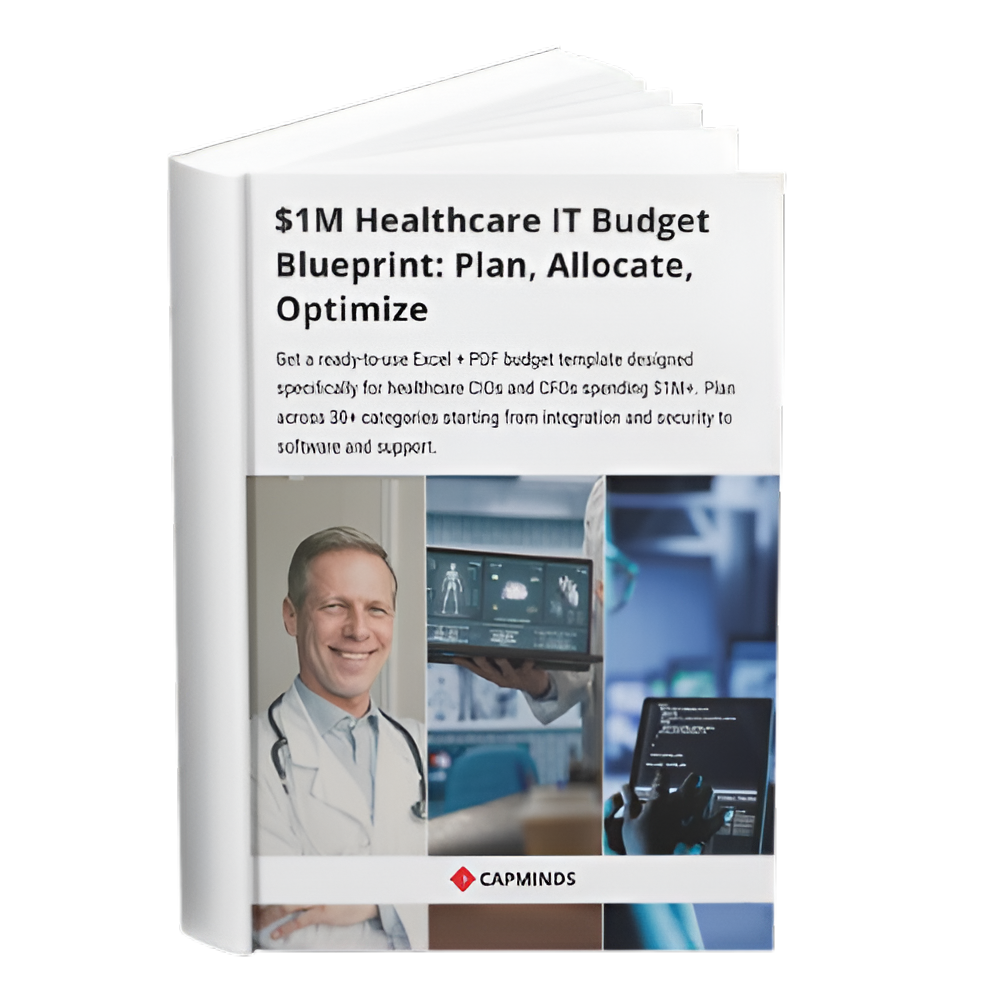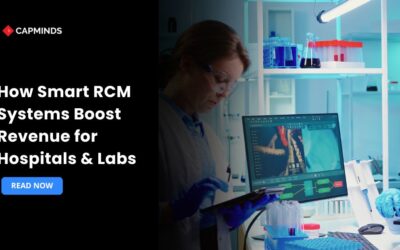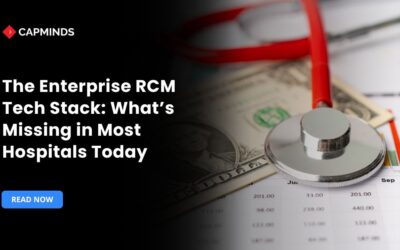A Complete Front-End RCM Workflow: From Patient Intake to Claim Submission
Revenue Cycle Management is the foundation of every healthcare organization’s financial health. The front-end RCM workflow is important as the back-end procedures, such as collections and denials management, which frequently grab the attention.
It ensures that eligibility is confirmed, patient and insurance information are accurately recorded, and claims are properly prepared before being submitted. A seamless front-end process enhances patient satisfaction, streamlines reimbursements, and reduces costly denials.
In this blog, you’ll know the workflow from patient intake to claim submission and how healthcare providers may optimize their operations for increased productivity and financial results.
Understanding the Importance of Front-end RCM
The front-end of revenue cycle management encompasses all processes that take place before the creation and submission of a claim. These procedures include charge capture, medical coding, insurance verification, patient registration, and claim preparation.
Inaccurate front-end procedures cause mistakes to trickle down the workflow, leading to denied claims, hold-ups, and lost income.
Furthermore, front-end procedures also influence the patient’s initial perception of your practice as healthcare moves toward patient-centered treatment. In addition to guaranteeing compliance, a well-organized intake and registration procedure promotes satisfaction and trust.
1. Registration and Intake of Patients
The RCM workflow is built upon the patient intake procedure. It starts when a patient goes into a clinic or makes an appointment. At this point, medical personnel gather vital demographic and health data. Here, accuracy is essential because any inconsistencies may result in the later rejection of the claim.
Important tasks consist of:
- Gathering demographic information (name, address, birthdate, and phone number)
- Logging insurance information (group number, policy number, and payer)
- Recording medical history and visitation purpose
By automating data collection, digital intake forms, kiosks, and integrated practice management systems can lessen administrative load and human error. Making the switch to computerized patient intake increases data accuracy while also saving time.
2. Eligibility and Insurance Verification
Verification of insurance is the next step after the patient data is recorded. This procedure guarantees that the suggested services qualify for payment and that the patient’s coverage is active. One of the most frequent reasons for claim denials is the failure to confirm eligibility.
At this point, employees should verify:
- Dates of active insurance coverage
- Benefits and services included
- Patient accountability, such as deductibles, copays, and coinsurance
- Pre-authorization specifications
Clearinghouse-integrated automated eligibility verification systems can instantly verify this data. Providers can prevent unexpected expenses, guarantee compliance, and establish clear financial expectations with patients by verifying insurance before the visit.
3. Management of Prior Authorization
Before being carried out, some treatments, drugs, or diagnostic tests need the payer’s prior approval. In order to prevent payment delays and denials, this step is essential. Manual prior authorization, regrettably, can be laborious and time-consuming.
To increase productivity:
- For quicker processing, use electronic prior authorization technologies.
- Keep track of payer-specific regulations and specifications to prevent noncompliance.
- Continue to communicate regularly with payers and patients.
Providers can avoid last-minute cancellations, save administrative expenses, and minimize delays by simplifying prior authorization.
4. Capture of Charge
All billable services, procedures, and treatments given during the patient visit must be documented as part of the charge collection process. Revenue leakage is the direct result of any missed charges. However, incorrect or redundant charges may lead to payer audits and compliance problems.
Among the best practices are:
- Charge capture tool integration with the EHR system
- Using real-time notifications to avoid missing paperwork
- Teaching healthcare personnel how to properly document
Providers may promptly log services with the use of mobile and electronic charge capture solutions, guaranteeing that no charge is overlooked while upholding compliance.
Related: What to Look for in an RCM Platform: A Buyer’s Guide for 2025
5. Medical Coding
Accurate medical coding is the backbone of clean claims. Coders translate diagnoses and procedures into standardized codes such as ICD-10, CPT, and HCPCS. These codes not only impact reimbursement but also influence compliance and reporting accuracy.
Coding challenges often include undercoding, upcoding, or missing modifiers, all of which can result in denials. To strengthen this step, healthcare organizations should:
- Provide regular training for coders and billing staff
- Use computer-assisted coding for improved accuracy
- Conduct routine audits to identify recurring errors
With accurate coding, providers ensure proper reimbursement while reducing the risk of payer audits.
6. Claim Creation and Scrubbing
The creation of claims comes when charges and codes are finalized. All required patient, provider, and service information is included in these claims. However, claims are scrubbed, that is, examined by automated technologies for mistakes, omissions, and compliance problems before being submitted.
Scrubbing checks for claims for:
- Absence of patient data
- Mismatched modifiers or invalid codes
- Inaccurate insurance information
- Services that are not covered
The reimbursement cycle is shortened, first-pass acceptance rates are raised, and rework is decreased using automated claim scrubbing. A considerable decrease in claim rejections is frequently observed by providers who invest in advanced claim scrubbers.
7. Claim Submission
Submitting a claim is the last phase in the front-end RCM workflow. Clearinghouses handle the electronic transmission of clean claims to payers. Maintaining a sustainable cash flow requires a timely and precise submission.
Providers ought to monitor:
- Payer-specific guidelines and deadlines for submissions
- Capabilities for batch submission for high-volume procedures
- Rejected claim reports must be corrected right away and submitted again.
In addition to lowering manual labor, automating claim submission speeds up payouts and guarantees a consistent flow of income.
Advantages of a Front-End RCM Workflow Simplified
For healthcare practitioners, putting in place an effective front-end workflow has quantifiable advantages:
- Increased Clean Claim Rate – Correct coding and data lowers denials.
- Faster Reimbursements – Delays are eliminated by automated submission and verification.
- Better Patient Experience – Trust is developed through transparent financial communication.
- Lower Administrative Costs – Staff effort is decreased through automation.
- Regulatory Compliance – Penalties are avoided with proper coding and documentation.
Providers provide a smooth procedure that promotes patient satisfaction and financial stability by streamlining every stage from intake to submission.
CapMinds End-To-End RCM Services
At CapMinds, we specialize in delivering complete digital health tech services that streamline your front-end RCM workflow from patient intake to claim submission.
By optimizing every step of the process, we help healthcare providers reduce denials, improve reimbursement speed, and ensure compliance while enhancing the patient experience.
Our services include:
- Medical Billing Services – Accurate charge capture, coding, and claim management for faster reimbursements.
- Front-End RCM Workflow Optimization – From patient registration to claim scrubbing, we simplify and automate every step.
- Insurance Verification & Eligibility Services – Real-time payer checks to prevent costly denials.
- Prior Authorization Management – Faster approvals with streamlined communication and electronic workflows.
- Claim Creation & Submission Support – Clean claims delivered on time for higher acceptance rates.
Our expertise ensures financial efficiency, regulatory compliance, and patient satisfaction, all in one solution.
Partner with CapMinds to transform your revenue cycle with end-to-end RCM workflow services.




